Northampton Saints
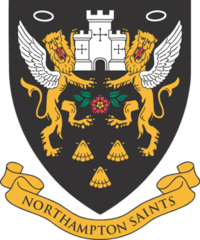 | |||
| Full name | Northampton Rugby Football Club | ||
|---|---|---|---|
| Nickname(s) |
Jimmies[1] Saints | ||
| Founded | 1880 | ||
| Location | Northampton, England | ||
| Ground(s) | Franklin's Gardens (Capacity: 15,500[2]) | ||
| Chairman | Tony Hewitt | ||
| Director of Rugby | Jim Mallinder | ||
| Captain(s) | Tom Wood | ||
| Most caps | Ron Jacobs (470) | ||
| Top scorer | Paul Grayson (2,786)[3] | ||
| Most tries | Teddy Cook (219) | ||
| League(s) | English Premiership | ||
| 2016-17 | 7th | ||
| |||
| Official website | |||
|
www | |||
Northampton Saints are a professional rugby union club from Northampton, England. They were formed in 1880, and play in black, green, and gold colours. The team play their home games at Franklin's Gardens, which has a capacity of 15,500. Their biggest rivals are Leicester Tigers. "The East Midlands Derby" is one of the fiercest rivalries in English Rugby Union.[4][5]
The club has won the English Premiership, the RFU Championship three times, the Anglo-Welsh Cup, the EDF Energy Trophy, the European Rugby Champions Cup, and are twice winners of the European Rugby Challenge Cup.
History
Early years
The club was established in 1880 under the original title of Northampton St. James (Saints) by Rev Samuel Wathen Wigg, a local clergyman and curate of St. James Church who was a resident of the nearby village of Milton Malsor in the house known as "Mortimers".[6] This is how the club got its two nicknames of The Saints or Jimmies. His original concept was to promote "order" to his younger parish members by creating a youth rugby club, with the philosophy of a "hooligan sport designed to turn them into gentlemen".
It was not long before Northampton had one of the major rugby union teams in the country. Twenty years after its establishment, the first Saints player, local farmer Harry Weston, was awarded an England cap.
As the club progressed through the early years of the 20th century one player dominated this era for the club, Edgar Mobbs. Edgar was a hero throughout the town. He was the first Northampton player to captain his country but is best remembered for his exploits in World War I. After initially being turned down as too old, Edgar raised his own "Sportsman's" battalion otherwise known as Mobbs Own. Edgar was killed in battle, leading his battalion over the top by kicking a rugby ball into no man's land on 29 July 1917 attacking a machine gun post and his body was never found. The club arranged the Mobbs Memorial Match as a tribute. It had been played every year since 1921 and the fixture took place between the Barbarians and East Midlands at Franklin's Gardens until the Barbarians withdrew their support in 2008.[7] The match was saved by the efforts of former Northampton player Bob Taylor and former Northampton chairman Keith Barwell, and since 2012 it has been played alternately at Bedford Blues' Goldington Road ground and Franklin's Gardens, with the host club facing the British Army team.[8]
In this postwar period the Saints continued to grow, and they started to produce some of the best players in England, some of whom went on to captain their country. They were one of the driving forces in the English game for the next 60 years producing players such as Butterfield, Jeeps, Longland, White and Jacobs but hard times were ahead.
The club failed to keep pace with movements within the game and top players were no longer attracted to the Gardens, where a 'them and us' mentality had built up between the players and those in charge of the club. Some former players formed their own task force which swept out the old brigade in the 1988 'Saints Revolution' and put a plan into action which would put the club back at the top of the English game.
Barry Corless, as director of rugby, set about restructuring the club and soon the Saints were back on the way up, helped by the signing of All Blacks legend Wayne "Buck" Shelford.
In 1990, Northampton Rugby Union Football Club gained promotion to the then First Division and the following year made their first trip to Twickenham to play Quins in the Pilkington Cup Final. They lost in extra time but the foundations of a good Saints line-up were beginning to show in the following few seasons.
Tim Rodber and Ian Hunter forced their way into the England setup while younger players such as Paul Grayson, Matt Dawson and Nick Beal came through the ranks and would follow the duo into the England senior team.
In 1994, Ian McGeechan took over as Director of Rugby, and although the club were relegated in his first season, they returned in style the next season, winning every single game of their campaign and averaging 50 points a game. This season is referred to by many fans of the club as the "Demolition Tour of Division Two".
Professional era
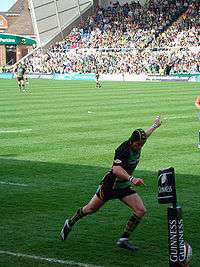
In 1995, rugby union turned professional and the club was taken over by local businessman Keith Barwell.
In 1999, Saints came runners-up in the Allied Dunbar Premiership, their league campaign climaxing with a crucial home local derby with eventual winners Leicester Tigers which they lost 15–22.[9] Ian McGeechan had left the club at the end of the previous season to return to coach Scotland, and was replaced by former Saints player John Steele who had done well on a limited budget at London Scottish. Steele relied on the foundations laid by McGeechan, as well as the inspirational captaincy of Samoan Pat Lam to lead the club to European success the following season.
In 1999–2000, the club became a Public Limited Company (Plc) and shares were issued to the public; in this season the Saints lost in the Tetley's Bitter Cup Final to Wasps, but beat Munster 9–8 in the European Cup Final to win their first major trophy.
After a poor start to the 2001/2002 season, former All-Black coach Wayne Smith was appointed as head coach. He went on to transform the club in five short months. A team who looked down and out in November were moulded into a side that reached the Powergen Cup final and again qualified for the Heineken Cup. Travis Perkins became the club's main sponsor in 2001.[10]
In recent times the club narrowly survived relegation from the Premiership, after the then coach (Alan Solomons) was sacked in the middle of the 2004–5 season. The coaching role was passed onto the former first team mates Budge Pountney and Paul Grayson to tide the team over. They had a slow start in the 2005–6 season, but continued to stay mainly unbeaten after the New Year. Budge retired at the start of the 2006–7 season leaving Grayson in overall control.
The Saints would again compete in the 2006–07 Heineken Cup. They finished second in their pool, behind Biarritz Olympique, the runners-up from the previous season. Northampton qualified for the quarter-finals and actually met Biarritz in Spain. Despite being in last place of the English league at the time, they defeated the French champions 7–6 to advance to the semi-finals.
Relegation (2007–08)
On 28 April 2007, despite a 27–22 victory over London Irish at Franklin's Gardens, Northampton were relegated from the English Premiership. A "behind the scenes restructure" led to the brief appointment of Peter Sloane as head coach, from the role of forwards coach. Paul Grayson became the skills and backs coach. England Saxons coach Jim Mallinder became the new head coach and Director of Rugby, with his assistant Dorian West also following as assistant coach. Peter Sloane has since left the club.
On 22 March 2008, Northampton beat Exeter Chiefs to ensure their promotion and a return to the Guinness Premiership. On 12 April 2008, Northampton beat Exeter Chiefs 24–13 at Twickenham Stadium to win the EDF Energy Trophy. On 26 April 2008 they ended their National Division One season undefeated with 30 wins from 30 games.
Return to Premiership (2008–present)
In the 2008–09 season, the Saints finished eighth on the table and only losing one game at home to Newcastle Falcons. They also lifted the European Challenge Cup, defeating French side Bourgoin 15–3 in the final on 22 May 2009 at The Stoop in London.[11] The victory gave them a place in the 2009–10 Heineken Cup.
In March 2010, the Saints won the Anglo-Welsh Cup final against Gloucester 30–24, gaining them their fourth piece of silverware in three years, and a place in the following season's Heineken Cup. They also finished second in the English Premiership, losing to Saracens 19–21 in the semi-final played at Franklin's Gardens, and progressed as far as the quarter-finals of the Heineken Cup losing to Munster at Thomond Park, Limerick.
Northampton finished fourth in the 2010-11 English Premiership, losing to Leicester in the semi-final. Saints also went undefeated into the final of the Heineken Cup, where they were beaten by Leinster 33–22, at the Millennium Stadium.
At the beginning of the 2011–12 season, with nine players out for the 2011 Rugby World Cup in New Zealand, Saints were knocked out of the 2011–12 Heineken Cup in Stadium MK by Munster. When the international players returned, Saints began to move up the table. England picked eight Saints players out of a squad of 32 to represent England, meaning that over a quarter of the England team were Saints – a new club record for the number of players selected for a single England squad. In 2011-12, the Saints reached a third successive Premiership semi-final and a second Anglo-Welsh Cup final in three seasons.
After winning their first five matches of 2012-13, the Saints were pulled back into the pack in the Premiership and exited both the Anglo-Welsh and Heineken Cups, despite ending Ulster's four-year unbeaten home European record just before Christmas 2012. The team finished fourth in the league, and after beating Saracens in the semi-final reached their first ever Premiership final, where they lost 37-17 to Leicester.[12][13] The 2013 season finished with seven players being taken to Argentina as part of the England squad, including Tom Wood as captain.
Northampton finished the 2013–14 season second in the league with 78 points. The reached the final of the 2013–14 European Challenge Cup, which they won by beating Bath 16-30.[14] Saints then beat Saracens 20-24 in the final to win the 2013–14 English Premiership.[15][16]
Stadium
Franklin's Gardens
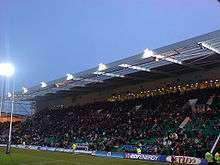
Northampton Saints have played at Franklin's Gardens since 1880, when the club was born. Franklin's Gardens is a purpose-built rugby stadium near the town centre. It is about 1,250 m from the railway station and about 2,000 m from the bus station. The stadium holds approximately 15,500 people. The stadium also has 40 corporate boxes. Each can hold from 8 to 24 people. The four stands are: Tetley's Stand; Elite Insurance South Stand; Church's Stand; and the new Barwell Stand (which replaced the Sturtridge Pavilion). It is also a multi-functional conference centre as well as the only Aviva Premiership ground with its own cenotaph.
In 2009, the Saints' board announced they would be applying to increase capacity to 17,000 with the redevelopment of the North Stand. It was intended this would be funded by a £40 million investment by supermarket chain Asda, who would build a new store on the land currently used as training pitches. A political battle ensued with the local council, which later came to be seen as an attempt by the board to wrest public funding and public land for their commercial objectives.
The club has since secured funding through alternate means – a loan thought to be in the region of £5million through Northampton Borough Council – and with planning permission rubber-stamped, building will commence in the summer of 2015. The stand, which will take the name of the Barwell family, is due to be completed in time for the start of the 2015/16 season and will take the capacity at Franklin's Gardens up to 15,500.
Northampton Saints had an unbeaten home record that stretched from March 2007 to March 2009, much of this record was set during the Saints' 2007/08 promotion from the RFU Championship (previously National Division One). During the 2008/09 English Premiership regular season the Saints only lost at Franklin's Gardens on one occasion, to the Newcastle Falcons.
The average attendance at the Gardens in the 2014–15 season is 13,428.
The club's Barwell Stand was finished in October 2015 and debuted against Saracens on 7 November 2015.
Stadium:MK

The club played a 2011 Heineken Cup quarter final match against Ulster at Stadium:MK in Milton Keynes, because Franklin's Gardens was too small to meet the minimum 15,000 seats demanded by the European Rugby Cup tournament organisers.[17] The Saints won the match, beating Ulster 23–13, before a crowd of over 21,000. The Saints also played the semi final there the same year, beating Perpignan 23-7. Most recently the Saints played a St. George's Day match there against Saracens in April 2015, winning 25-20.
Kits
In 2008, after being promoted from the championship to the premiership, Saints changed from Kooga to Rhino. After two years with Rhino, and coming second in the table, Saints switched again to BURRDA, a Swiss sports apparel company. Northampton have signed a four-year deal with BURRDA which have brought back the old-fashioned ring but with a modern twist for the home shirt and the away shirt with its black and gold ring with a peppermint light green background. In the 2014/15 season BURRDA released a kit with vertical green, black and gold stripes of the same size. It was one of the most popular kit releases of Saints History. From the start of the 2016/17 season Macron will be Saints' kit supplier, signing a 10-year deal with the club.
Current kit
The kit is supplied by Macron. On the front of the shirt, Travis Perkins is at the centre while Elite Insurance Company appears on the top left while StubHub! appears on the left and right of the collar. Hankook appears on the left sleeve. On the back of the shirt, Kubota appears at the top while GRS appears on top of the squad number while The University of Northampton appears on the bottom.
Rivalries
Saints' main rivals are Leicester Tigers, whom they face in the East Midlands derby. Over a number of recent years, the Saints have developed a rivalry with Saracens.
Current squad
2017-18 Note: Flags indicate national union as has been defined under WR eligibility rules. Players may hold more than one non-WR nationality.
Academy squad
Note: Flags indicate national union as has been defined under WR eligibility rules. Players may hold more than one non-WR nationality.
|
|
Coaching Staff
First team
- Jim Mallinder – Director of Rugby
- Dorian West – Forwards Coach
- Alan Dickens – Assistant Coach
Academy
- Alan Dickens – Academy Manager
- Dusty Hare – Academy Recruitment and Development Manager
- Mark Hopley – Academy Coach
- Ross Stewart – Elite Player Development Group Manager
Notable former players
-
 Ignacio Fernández Lobbe
Ignacio Fernández Lobbe -
 Santiago González
Santiago González -
 Federico Mendez
Federico Mendez -
 Martin Scelzo
Martin Scelzo -
 Mark Connors
Mark Connors -
 Salesi Ma'afu
Salesi Ma'afu -
 Daniel Vickerman
Daniel Vickerman -
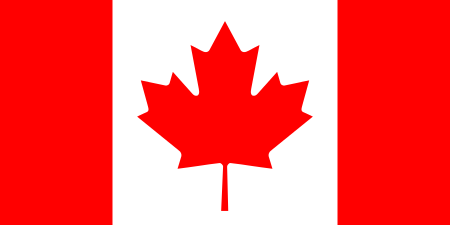 Jake Ilnicki
Jake Ilnicki -
 Chris Ashton
Chris Ashton -
 Martin Bayfield
Martin Bayfield -
 Nick Beal
Nick Beal -
 Arthur Gilbert Bull
Arthur Gilbert Bull -
 Jeff Butterfield
Jeff Butterfield -
 Calum Clark
Calum Clark -
 Ben Cohen
Ben Cohen -
 Matt Dawson
Matt Dawson -
 Lee Dickson
Lee Dickson -
 Phil Dowson
Phil Dowson -
 Paul Grayson
Paul Grayson -
 Roger Hosen
Roger Hosen -
 Ian Hunter
Ian Hunter -
 Dickie Jeeps
Dickie Jeeps -
 Peter Larter
Peter Larter -
 Edgar Mobbs
Edgar Mobbs -
 John Olver
John Olver -
 Gary Pearce
Gary Pearce -
 David "Piggy" Powell
David "Piggy" Powell -
 Tim Rodber
Tim Rodber -
 Keith Savage
Keith Savage -
 Jon Sleightholme
Jon Sleightholme -
 Bob Taylor
Bob Taylor -
 Phil Taylor
Phil Taylor -
 Steve Thompson
Steve Thompson -
 Bryan West
Bryan West -
 Don White
Don White -
 Olivier Brouzet
Olivier Brouzet -
 Christian Labit
Christian Labit -
 Louis Picamoles
Louis Picamoles -
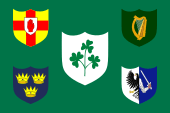 Jonathan Bell
Jonathan Bell -
 Roger Wilson
Roger Wilson -
 James Downey
James Downey -
 Paul Shields
Paul Shields -
 Andrew Blowers
Andrew Blowers -
 Bruce Reihana
Bruce Reihana -
 Mark Robinson
Mark Robinson -
 Wayne Shelford
Wayne Shelford -
 Carlos Spencer
Carlos Spencer -
 Fa'atoina Autagavaia
Fa'atoina Autagavaia -
 Pat Lam
Pat Lam -
 George Pisi
George Pisi -
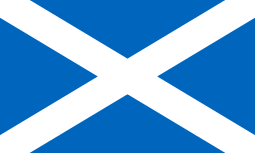 Joe Ansbro
Joe Ansbro -
 Neil Edwards
Neil Edwards -
 Sean Lamont
Sean Lamont -
 John Leslie
John Leslie -
 Euan Murray
Euan Murray -
 Budge Pountney
Budge Pountney -
 Tom Smith
Tom Smith -
 Richard Metcalfe
Richard Metcalfe -
 Gregor Townsend
Gregor Townsend -
 Selborne Boome
Selborne Boome -
 Corne Krige
Corne Krige -
 Juandre Kruger
Juandre Kruger -
 Brian Mujati
Brian Mujati -
 Garry Pagel
Garry Pagel -
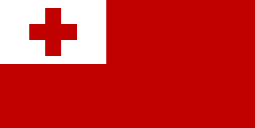 Tevita Taumoepeau
Tevita Taumoepeau -
 Soane Tonga'uiha
Soane Tonga'uiha -
 Samu Manoa
Samu Manoa -
 Chris Wyles
Chris Wyles -
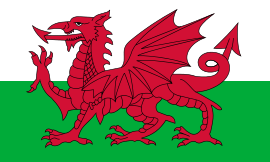 Allan Bateman
Allan Bateman -
 Darren Morris
Darren Morris -
 Martin Roberts
Martin Roberts
Hall of Fame
The history of Northampton Saints is one filled with illustrious names. To recognise and honour its best players, the club established its Hall of Fame in 2004. To date 12 players have been inducted:
|
Forwards
|
Backs
|
Captains
|
|
|
Club honours
- Aviva Premiership (Tier 1)

- (1) 2013–14
- RFU Championship (Tier 2)
- Anglo-Welsh Cup
- (1) 2009–10
- EDF Energy Trophy
- (1) 2007–08
- Heineken Cup

- (1) 1999–2000
- European Challenge Cup

- Aviva A League
- Middlesex 7s
- (1) 2002–03
Statistics
Overall Stats
- Most Points In A Match 96 (v Sedgley Park 2008)
- Most Tries In A Match 14 (v Sedgley Park 2008)
- Most Conversions In A Match 13 (v Sedgley Park 2008)
- Most Penalty Goals In A Match 7 (v Richmond 1997)
- Most Drop Goals In A Match 2 (v Newcastle Falcons 1996)
Seasons summary
| Season | Domestic League | Domestic Cup | European Cup | ||||
|---|---|---|---|---|---|---|---|
| Competition | Final position | Points | Competition | Performance | Competition | Performance | |
| 2016-17 | Premiership | 7th | 52 | LV Cup | 2nd in Pool | ERCC | 4th Pool 4 |
| 2015-16 | Premiership | 5th | 60 | - | - | ERCC | Quarter-final |
| 2014–15 | Premiership | 1st | 76 | LV Cup | Semi-Final | ERCC | Quarter-final |
| 2013–14 | Premiership | 2nd (Champions) | 78 | LV Cup | Runners Up | 2013–14 Heineken Cup | 2nd Pool A (Won Challenge Cup) |
| 2012–13 | Premiership | 4th (Runners-Up) | 65 | LV Cup | 2nd in pool | 2012–13 Heineken Cup | 2nd Pool D |
| 2011–12 | Premiership | 4th | 65 | LV Cup | Runners-Up | 2011–12 Heineken Cup | 3rd Pool A |
| 2010–11 | Premiership | 4th | 65 | LV Cup | 2nd in pool | 2010–11 Heineken Cup | Runners-up |
| 2009–10 | Premiership | 2nd | 71 | LV Cup | Winners | 2009–10 Heineken Cup | Quarter-final |
| 2008–09 | Premiership | 8th | 49 | EDF Energy Cup | Semi-final | European Challenge Cup | Winners |
| 2007–08 | Division One | Champions | 143 | EDF Energy Trophy | Winners | Did Not Qualify | Did Not Qualify |
| 2006–07 | Premiership | 12th | 33 | EDF Energy Cup | 4th in pool | 2006–07 Heineken Cup | Semi-final |
| 2005–06 | Premiership | 6th | 53 | Powergen Cup | 2nd in pool | European Challenge Cup | Quarter-final |
| 2004–05 | Premiership | 11th | 40 | Powergen Cup | N/A | 2004–05 Heineken Cup | Quarter-final |
| 2003–04 | Premiership | 3rd | 70 | Powergen Cup | N/A | 2003–04 Heineken Cup | 2nd Pool D |
| 2002–03 | Premiership | 3rd | 62 | Powergen Cup | Runners-up | 2002–03 Heineken Cup | Quarter-final |
| 2001–02 | Premiership | 5th | 56 | Powergen Cup | Runners-up | 2001–02 Heineken Cup | 4th Pool E |
| 2000–01 | Premiership | 4th | 59 | Powergen Cup | N/A | 2000–01 Heineken Cup | 4th Pool A |
| 1999–00 | Premiership | 5th | 35 | Tetley Bitter Cup | Runners-up | 1999–2000 Heineken Cup | Winners |
See also
References
- ↑ "Glossary 2009/10". Rugbynetwork.net. Retrieved 15 November 2011.
- ↑ "The Barwell Stand". Northampton Rugby Football Club. Retrieved 10 October 2015.
- ↑ "Club records". Northampton Saints. Retrieved 16 May 2013.
- ↑ "Northampton Saints v Leicester Tigers, Premiership semi-final: Gloves off for rugby’s biggest grudge match". Daily Telegraph. 15 May 2014. Retrieved 5 January 2017.
- ↑ "The 12 biggest rugby rivalries on the planet". Wales Online. 11 March 2016. Retrieved 5 January 2017.
- ↑ "Saints history website". Retrieved 29 December 2013.
- ↑ Bolton, Paul. "Saints and the Army gather to honour fallen hero". telegraph.co.uk. Retrieved 9 December 2014.
- ↑ "Mobbs Memorial Match promises to be poignant occasion". rfu.com. Retrieved 9 December 2014.
- ↑ "Rugby Union | Leicester move out of sight". BBC News. 13 March 1999. Retrieved 20 December 2010.
- ↑ Northampton Saints, northamptonsaints.co.uk Retrieved 30 November 2010
- ↑ Pryor, Matthew (23 May 2009). "Northampton lift European Challenge Cup". The Times. London. Retrieved 26 May 2009.
- ↑ "Hartley hit with 11 week ban". www.espn.co.uk. 25 May 2013. Retrieved 12 June 2013.
- ↑ "Tigers power to tenth title as Hartley sees red". www.espn.co.uk. 25 May 2013. Retrieved 12 June 2013.
- ↑ "Amlin Challenge Cup final: Bath 16-30 Northampton". www.bbc.co.uk. 22 May 2014. Retrieved 2 June 2014.
- ↑ "Premiership final: Saracens 20-24 Northampton Saints". www.bbc.co.uk. 31 May 2014. Retrieved 2 June 2014.
- ↑ "Aviva Premiership Final: Saracens 20 Northampton Saints 24". www.premiershiprugby.com. 31 May 2014. Retrieved 2 June 2014.
- ↑ Northampton forced to move Ulster tie to Milton Keynes – BBC Sport
